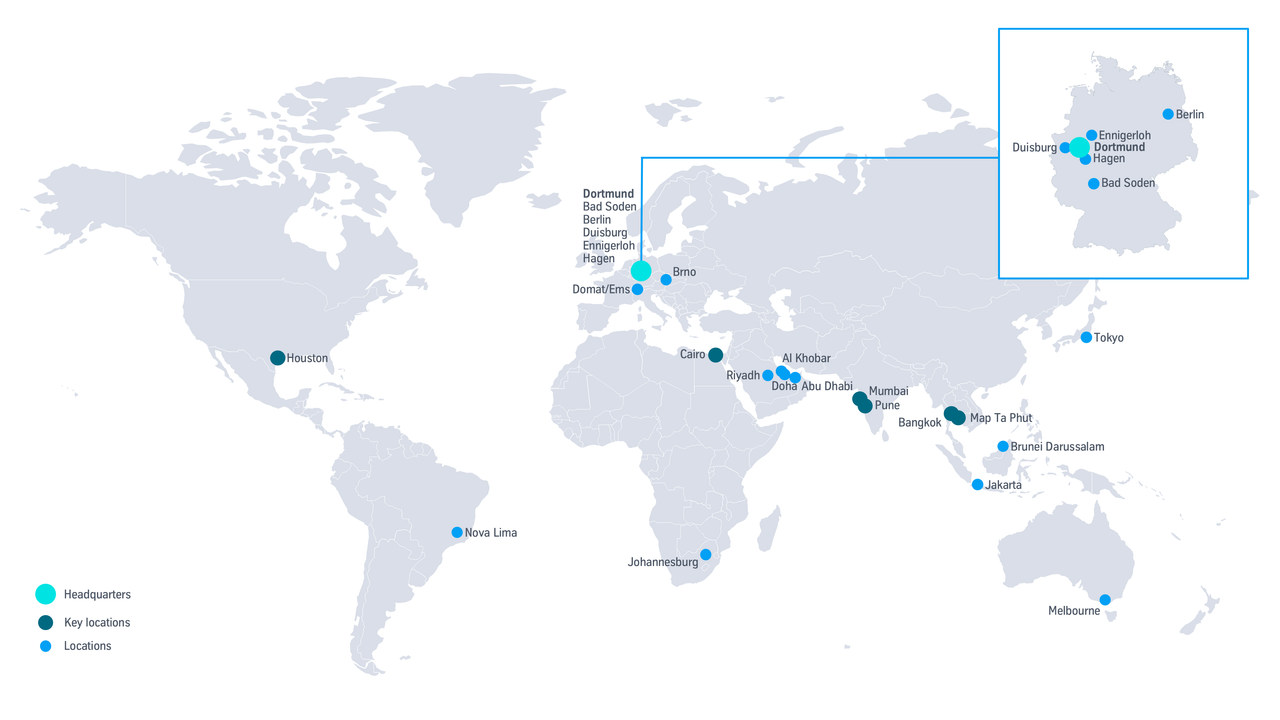About thyssenkrupp Uhde
At thyssenkrupp Uhde, we pioneer chemical engineering solutions that respond to the challenges of industry, energy, and the protection of our planet.
As climate change evolves and resource scarcity grows, our expertise lies in pioneering engineering for cleaner solutions, transforming waste and renewable resources into sustainable fuels and chemicals.
We develop and construct innovative chemical plants that excel in environmental stewardship and operational efficiency – making thyssenkrupp Uhde the trusted technology integrator for a sustainable future.
Your partner in progress – Leveraging our rich innovation legacy to build a cleaner future
Your partner in progress – Leveraging our rich innovation legacy to build a cleaner future

Across more than 100 years, thyssenkrupp Uhde has designed and built over 3,000 chemical and process plants worldwide.
Consider us as your expert one-stop shop for plant engineering solutions, accompanying you every step of the way.
More than just a technology provider, we are your partner in shaping your future and offer a full spectrum of services, from technology licensing to complete engineering, procurement, and construction (EPC) solutions:
Process Technologies – Cutting-edge solutions for ammonia, methanol, refining, petrochemicals, coke plants, plastics, oleochemicals and green chemicals.
Project Execution – Flexible delivery models tailored to customer needs. We leverage modularization and standardization to minimize project risks and ensure consistent quality.
Sustainability & Digitalization – Decarbonization strategies, digital plant services, and lifecycle support for enhanced performance.
/thyssenkrupp_logo_claim_d.svg)




